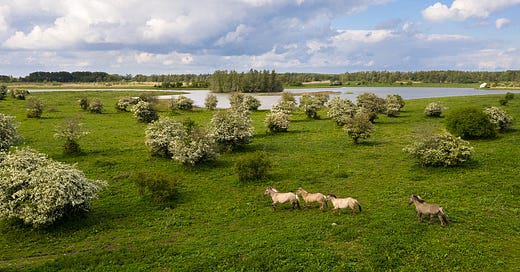Urban Rewilding: Amsterdam's Oostvaardersplassen Reserve
After disaster struck in 2018, Amsterdam's major urban rewilding project has recovered and is rebuilding natural spaces for the city's animals and wildlife.
The incredibly Dutch named Oostvaardersplassen has become a centrepiece for much of the debate around the merits of rewilding urban spaces in Europe. The project, which dates all the way back to the first drainings of the site in 1968, aimed to provide a centre of rewilding in Northern Europe, a place just 30 minutes drive from Amsterdam, and attached t…
Keep reading with a 7-day free trial
Subscribe to LettsSafari+ to keep reading this post and get 7 days of free access to the full post archives.





